My history with the Trine series is long, stretching all the way back to 2011. However it could have never happened at all as I missed the game when it first came out, it not really registering as a blip on my radar back then. It was on the recommendation of a friend, one who had noticed the uptick in my gaming consumption, who recommended that I give it a shout. What’s bloomed from that is a love of the quirky series that I’ve seen go through ups and downs over the decade of its existence; from it’s awkward beginnings as a quirky physics based platformer all the way through to its latest incarnation which, I’m happy to say, is the best one in the series to date.
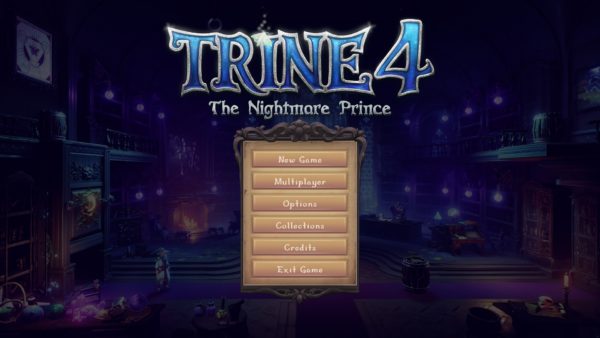
This time our intrepid trio of heroes isn’t summoned to adventure by the Trine, instead the request comes from the Astral Academy. Prince Sellius, one of their “students”, suffers from intense nightmares. This would be one thing but he’s also gifted with potent magic abilities and those nightmares are starting to invade the waking world. So the call goes out once again to the Wizard, the Thief and the Warrior to help save the kingdom from this threat and, hopefully, save the prince in the process.
Trine has always had amazing visuals and the latest instalment is no different. The trademark dreamlike quality is retained, coming to us through the liberal use of bloom and bright lighting effects. The 3D backgrounds and set pieces have become even more elaborate, becoming bigger and more detailed than they ever have before. The game still runs on the in-house proprietary engine and it appears that Frozenbyte has done a great job in improving its capabilities and optimising the implementation as the whole game runs very smoothly, even on old hardware. Suffice to say that Trine continues to be one of the most visually impressive platformers in the market and I’m glad the developers keep pushing themselves to improve upon what they’ve delivered before.
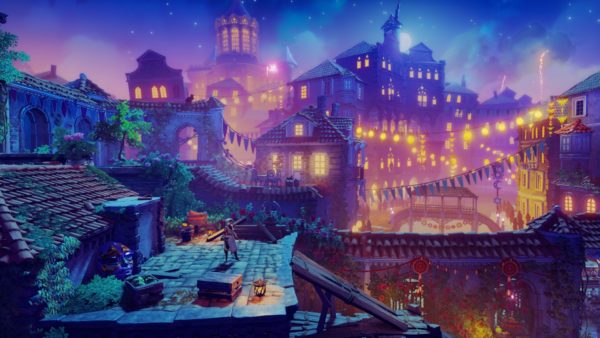
As anyone who played Trine 3 could predict the game has returned to its 2D platformer roots, removing the 3rd dimension and going back to what they know. For fans of the series this is a great thing as whilst the 3D version of Trine was indeed a step up the fact that they could only deliver a third of the game they wanted to with 3 times the budget of Trine 2 says a lot about the effort required to make it work. So in that respect Trine 4 is much more of an evolution of what Trine 2 was rather than a rework of 3 and the mechanics are all back to their roots. There have been some changes to make all characters more equally a part of the overall experience however, notably with the Wizard now having substantial combat capability and the Warrior being a key piece of numerous puzzle mechanics. Progression is now split into 2 tiers: one from combat and one from finding experience jars. The former is effectively the unlock for new puzzle mechanics whilst the latter unlocks augments to those abilities, effectively being quality of life improvements. Frozenbyte describes this as the “most complete Trine” experience they’ve ever created and, I’m glad to say, I wholeheartedly agree with them on that.
Combat is, as it always was, something of an also ran in the Trine experience. To be sure, there’s a more comprehensive combat experience to be had there than there ever has been, but pretty much all the engagements play out in the same way. The addition of more combat abilities to the Wizard, in the form of abilities that allow you to slam objects and levitate enemies, does make for a more varied experience but in all honesty most of them will get done with a lot of hack and slashing. The resurrection mechanic is also very, very forgiving ensuring that you’re unlikely to actually die and need to go back to a checkpoint at any time. To be fair this kind of combat fits into the whole overall zeitgeist of what Trine aims to be: a casual puzzle platformer that could be enjoyed by anyone. In that respect I don’t ever envision the combat aspects getting much more complicated than they already are.
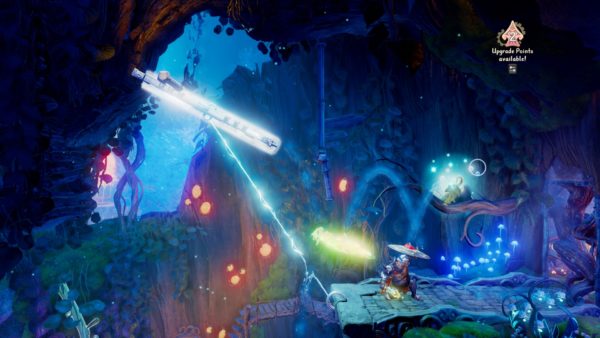
The puzzles have gone back to their roots with physics based problems being the name of the game. The wizard still has the ability to conjure boxes and platforms, the thief grappling hook things and now the warrior’s shield forms a core part of the experience with its reflecting ability. There are numerous augmentations to all of these abilities which bring with them a wide variety of challenges for you to solve. For the most part though the majority of puzzles are going to be heavily focused on the last mechanic you unlocked with only a couple other abilities required to solve them, at least for the main puzzles. The secret ones do ramp up the challenge somewhat although they, like pretty much every puzzle that’s ever been created in Trine, is subject to the whims and whiles of the emergent gameplay that the series is well known for.
Initially you’re pretty limited in the shenanigans that you can get up to as your abilities are significantly limited. However once you’re able to summon 2 items things start to get pretty interesting and only start to rocket up from there. Indeed the combination of multiple boxes plus the fairy rope means you’re able to make platforms of arbitrary height that you can grapple onto, meaning that no matter what the height of something is you’ll be able to get to it. Combine that with the fact that the developers have still not solved the likely unsolvable issue of the Wizard levitating things he’s standing on in some capacity (this time you can grapple 2 boxes together and then levitate one of them, which can fling you basically anywhere) and you’ve got a recipe for some rather whacky solutions to the puzzles at hand. Additionally, and I don’t remember noticing this in Trine 2, but the co-op aspects have obviously played a bit into the level design as there are some puzzles that have multiple solutions, most only requiring one character. So for those it’s usually very easy to get past them with all 3 abilities at your disposal.
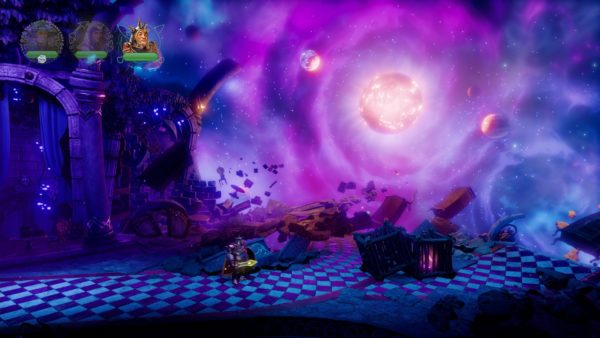
Despite all of that though the game is very well polished, not really suffering from any major game breaking issues or glitches. I mean sure, there were times where something happened that I wasn’t exactly expecting but I was deliberately trying to find ways to break the game’s physics engine in order to solve a puzzle in an easier way than intended. Perhaps my most enjoyable moments was when I was trying to grappling hook 2 boxes together, one of which was directly on top of the other. Doing that is fine however the second you start to levitate them things go wildly out of control as they start to clip and bounce off each other. I’m sure there’s easy fixes for edge cases like that but honestly, I think the game is better off with them in.
The story is perhaps the most well fleshed out of the Trine series but it’s not like that was a high bar to get over. The focus of Trine has always been on the visual and puzzle experience, notsomuch the characters or the world that they reside in. To be sure this does expand the world of Trine a little but it’s a pretty standard affair with a rather predictable outcome. Thankfully the story doesn’t get in the way of the game at all, mostly playing as background to what’s happening on screen.
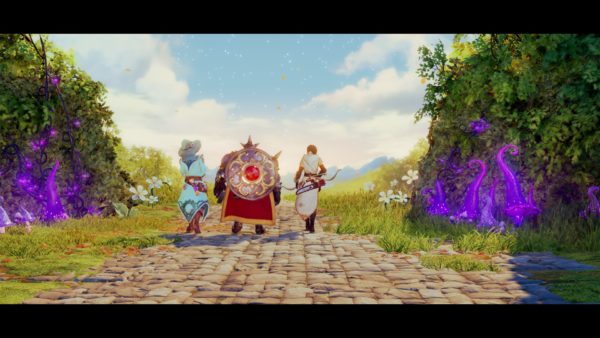
Trine 4 is a return to form for the series, taking the essence of what made it great originally and building that up significantly. The more varied and deeper puzzle mechanics make for some truly interesting game play, especially with the trademark exploitable physics engine that allows you to do all sorts of things that the developers never intended you to do. The visuals are once again of AAA quality, retaining the same stylings that have become a trademark of the game. The usual not-so-great features are still present in this instalment with the middling combat experience and a run-of-the-mill story that you’re likely to forget shortly after playing. Still what makes a Trine game great is here in spades and for fans of the series this is a definite must-play.
Rating: 8.5/10
Trine 4 is available now on PC, PlayStation 4, Xbox One and Nintendo Switch right now for $42.95. Game was played on the PC with a total of 9 hours playtime and 53% of the achievements unlocked.



